Achilles Tendon Rupture
Core Ultrasound
JANUARY 25, 2023
Peer reviewed by Ben Smith, MD on 1/23/23 Basic Knee Exam MSK Basics Courses

Core Ultrasound
JANUARY 25, 2023
Peer reviewed by Ben Smith, MD on 1/23/23 Basic Knee Exam MSK Basics Courses
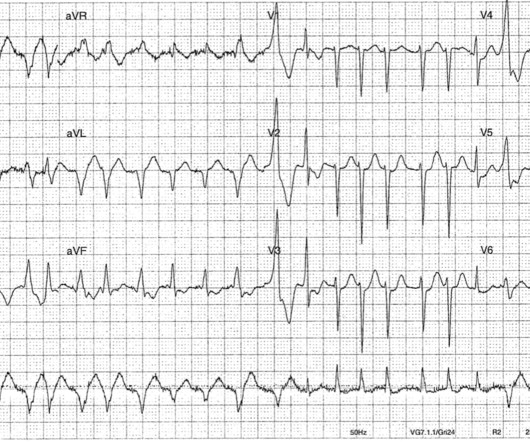
EMergucate
JANUARY 23, 2023
ECG of the Week 18th January 2023 – Interpretation The key determination here is what the patient’s rhythm is.
This site is protected by reCAPTCHA and the Google Privacy Policy and Terms of Service apply.

Critical Care Scenarios
JANUARY 25, 2023
An important cognitive bias in medicine, and how the COVID pandemic has shown us that generalizing the assumption of competence is a treacherous pitfall. Find us on Patreon here! Buy your merch here! An important cognitive bias in medicine, and how the COVID pandemic has shown us that generalizing the assumption of competence is a treacherous pitfall.

EMCrit Project
JANUARY 27, 2023
More cardiac arrest mastery with the sonorambler EMCrit Project by Scott Weingart, MD FCCM.

Silk City Blog
JANUARY 27, 2023
Written by Jessica DiPeri, MD This post first appeared on REBEL EM Background: Pneumothorax management is a common clinical condition in the emergency department (ED) occurring in patients of varying ages and caused by multiple etiologies, including spontaneous, traumatic, and iatrogenic pneumothorax. Regardless of the cause, a thoracostomy is often required for treatment (Currie 2007).
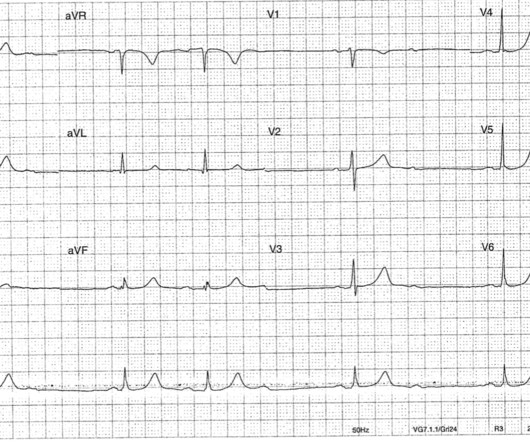
EMergucate
JANUARY 23, 2023
The following ECG was obtained from a 70 year old man with a history of chronic renal impairment, pre-dialysis.

The Bottom Line
JANUARY 27, 2023
In patients with sepsis-induced hypotension does a restrictive fluid strategy (with early vasopressor usage) compared to a liberal fluid strategy result in lower mortality before discharge by day 90?
Paramedicine Now brings together the best content for paramedicine professionals from the widest variety of thought leaders.

NHCPS Save a Life
JANUARY 26, 2023
A baby is less than 1/15 the size of the average adult. So, naturally, you should never perform Adult CPR on an infant. Instead, to save a baby’s life, you must learn Infant CPR and how it’s different. Read on to find out! Why is CPR Different for Infants? A baby’s musculature, bone density, size, […] The post Infant CPR: How to Save a Baby’s Life appeared first on SaveaLife.com.
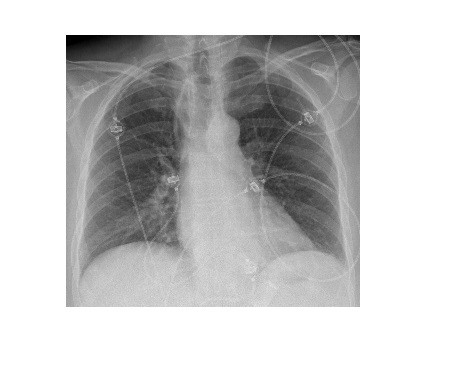
EMergucate
JANUARY 24, 2023
The following chest x-ray is from a 50 year old with chest tightness. What can be seen?

Prehospital Emergency Care Podcast
JANUARY 26, 2023
Hello from the NAEMSP 2023 EMS Conference! The PEC Podcast team brings you our deep dive series where we cover NAEMSP's Diversity, Equity, and Inclusion position statement titled: Essential Principles to Create an Equitable, Inclusive, and Diverse EMS Workforce and Work Environment: A Position Statement. In this episode we interview Rickquel Tripp, MD MPH CDR USN @prettyrickyMD Sylvia Owusu-Ansah MD, MPH @MdOwusu Ameera Haamid MD @HaamidtheMD Click here to download today!

Ingenious
JANUARY 26, 2023
The INGENIOUS Conference Paper titled “DisasterMM: Multimedia Analysis of Disaster-Related Social Media Data Task at MediaEval 2022” was submitted to the MediaEval 2022 Workshop which was held on 12-13 January 2023, collocated with MMM 2023 in Bergen, Norway and also online. The paper is written by our partners in CERTH and the preliminary proceedings of the workshop are available here.
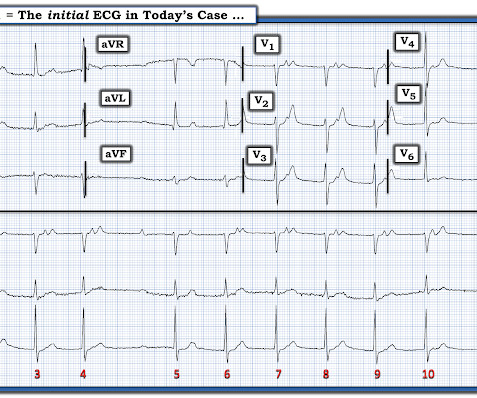
Dr. Smith's ECG Blog
JANUARY 26, 2023
= My Comment by K EN G RAUER, MD ( 1/26 /2023 ): = While reading ECGs — Dr. Smith came across the intriguing tracing shown in Figure-1. No history was available. However, the rhythm is indeed challenging — and illustrates a number of important principles in rhythm interpretation of interest to all emergency care providers. How would YOU interpret the ECG in Figure-1 ?

EMergucate
JANUARY 24, 2023
Question 1: PH = 7.29 That is moderate acidaemia PCO2 = 60 mmHg, that is high (>40). So, we have respiratory acidosis.
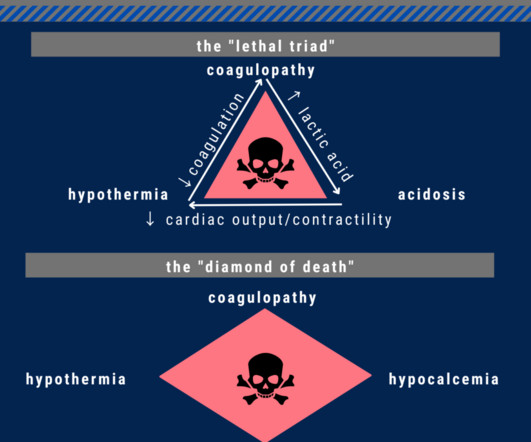
FOAMcast
JANUARY 25, 2023
Apple Podcasts , Spotify , or Listen Here References: Wray JP, Bridwell RE, Schauer SG, Shackelford SA, Bebarta VS, Wright FL, Bynum J, Long B. The diamond of death: Hypocalcemia in trauma and resuscitation. Am J Emerg Med. 2021 Mar;41:104-109. doi: 10.1016/j.ajem.2020.12.065. Epub 2020 Dec 28. PMID: 33421674. Giancarelli A, Birrer KL, Alban RF, Hobbs BP, Liu-DeRyke X.
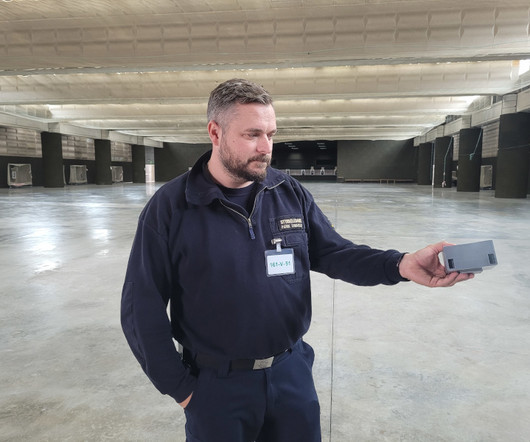
Ingenious
JANUARY 25, 2023
The importance of early warning of the presence of hazardous gases is of paramount importance for the safety of First Responders (FRs) and their operations. The gas sensor ( Alpes Lasers & TUW ) to be demonstrated within the INGENIOUS project needs to warn users in a simple and efficient manner. The sensor tested is truly portable and lightweight (less than 0.5 kg) and easy to use as its interface includes only a power button and an LED indicator.

REBEL EM
JANUARY 25, 2023
Take Home Points SBO should be considered in all patients presenting with abdominal pain particularly if they have a prior abdominal surgical history Patients with SBO often have non-specific signs and symptoms. There is no history or physical exam feature that rules out the disease Lactate elevation is a late finding in SBO. A normal lactate does not rule out the diagnosis Plain X-rays perform poorly in making or ruling out the diagnosis.

EMergucate
JANUARY 24, 2023
61-year-old man presented to ED with hypoglycemia that was difficult to correct with oral and IV dextrose.
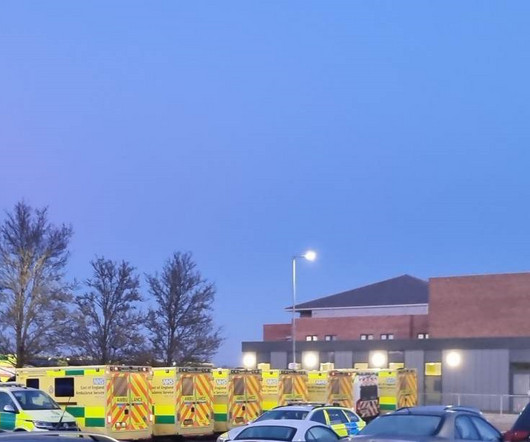
Broken Paramedic
JANUARY 24, 2023
When I started blogging about healthcare issues over a decade ago, my motivation was to shine a light on the failings I had witnessed in over a decade working for an NHS ambulance trust. I managed that and was grateful for the opportunities it gave me to raise the alarm in print, radio and TV. The mobility and versatility of paramedic work gave access and insight to many aspects of the NHS, from A&E departments and hospital wards, to community services and general practice.

FOAMcast
JANUARY 24, 2023
Apple Podcasts , Spotify , or Listen Here This episode is a departure from the typical FOAMcast clinical content, we will be back with strictly clinical content soon. In May 2022, I came across a fellow passenger and stranger in cardiac arrest at the Charlotte airport. A small team of strangers, including an emergency medicine resident, Dr. Jason Tanner, and an emergency department technician, Angel, assembled to treat this passenger.

The Overrun
JANUARY 23, 2023
I’m a huge fan of the late Anthony Bourdain, chef, documentarian, and general bon vivant. I’ve read all his books, seen him live, and watched all of his series. In his book, Kitchen Confidential , he talks about the business of cooking food a lot like colleagues I know talk about EMS. In one of the better parts of this book, he shares with you a typical day of his from waking up to end.
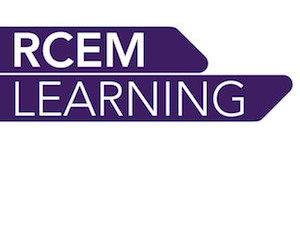
Emergency Medicine Ireland
JANUARY 23, 2023
Welcome back to the tasty morsels of critical care podcast. Today we are going to talk about triggering on the ventilator. Now given the ubiquity of the word “triggering” in contemporary discourse I must confess that i do find it quite “triggering” to walk up to a vent and see the pressure support set at 11 or some other horror show like a PEEP of 7… I mean, who would do such a thing.
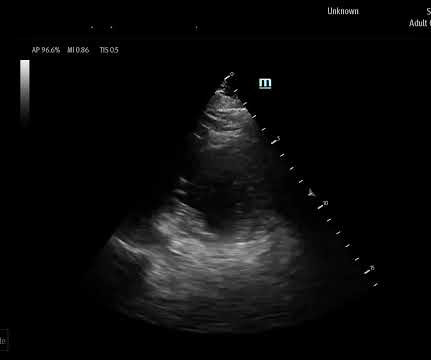
Dr. Smith's ECG Blog
JANUARY 23, 2023
Submitted and written by Megan Lieb, DO with edits by Bracey, Smith, Meyers, and Grauer A 50-ish year old man with ICD presented to the emergency department with substernal chest pain for 3 hours prior to arrival. The screening physician ordered an EKG and noted his ashen appearance and moderate distress. Triage EKG: What do you think? Triage physician interpretation: -sinus bradycardia -lateral ST depressions While there are lateral ST depressions (V5, V6) the deepest ST depressions are in V4.

REBEL EM
JANUARY 23, 2023
Background: Diphenhydramine, a first-generation antihistamine, is the most common pharmacologic agent used to treat acute allergic reactions. Despite being highly effective in treating acute allergic reactions, first-generation H1 antihistamines cross the blood-brain barrier and bind to H1 receptors, which can lead to undesirable side effects, including drowsiness, sedation, fatigue, and decreased cognition (Church MK 2010).

University of Maryland Department of Emergency Med
JANUARY 27, 2023
In a recent study in The Lancet, researchers at NIH attempted to test the hypothesis that optimal hydration may slow down the aging process. A.

The Skeptics' Guide to EM
JANUARY 21, 2023
Reference: Babl et al. Efficacy of prednisolone for bell palsy in children: a randomized, double-blind, placebo-controlled, multicenter trial (BellPIC). Neurology 2022 Date: January 3, 2023 Guest Skeptic: Dr. Jennifer Harmon is an MD, Ph.D at Children’s National Hospital in Washington, DC. She is a board-certified pediatric neurologist and completing another fellowship in medical genetics.

Dr. Smith's ECG Blog
JANUARY 21, 2023
Case submitted and written by Dr. Mazen El-Baba and Dr. Evelyn Dell, with edits from Jesse McLaren EMS brought a John Doe, in his 30s, who was found in an urban forest near a homeless encampment on a cool fall day. There were no signs of trauma on scene or on the patient. EMS reported an initial GCS of 8 with pupils equal and reactive. The patient had a witnessed generalized tonic-clonic seizure leading to GCS 4.

University of Maryland Department of Emergency Med
JANUARY 23, 2023
An Uncommon Cause of Shock Sepsis is the most common cause of distributive shock encountered in the emergency department and intens.

University of Maryland Department of Emergency Med
JANUARY 21, 2023
At this month’s Eastern Association for the Surgery of Trauma annual meeting there was a presentation asserting that hemodynamically unstable t.
Let's personalize your content